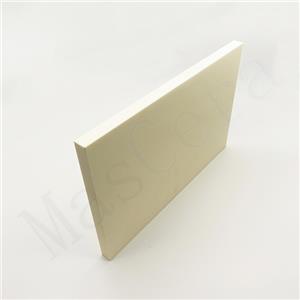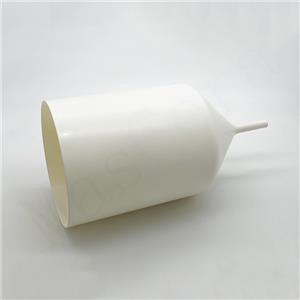Blog
-
Everything you need to know about alumina ceramic
Alumina ceramics is one of the most researched and widely used materials among technical ceramics.
13-07-2022 -
How to Choose the Right Alumina Ceramic for Your Application
Learn how to select the right alumina ceramic grade based on application, geometry, and manufacturing process. A practical guide with part-specific recommendations.
14-01-2026 -
Alumina Ceramic Grades Guide: Choosing Between 95% to 99.8% Purity
Explore the differences between alumina ceramic grades (95%–99.8%). Learn how aluminum oxide purity affects electrical insulation, thermal behavior, and industrial applications.
14-01-2026 -
Thermal Conductivity of Alumina Ceramic
Thermal conductivity is one of the most important physical characteristics of alumina ceramic and a key factor in its widespread use across electronic, electrical, and high-temperature industrial applications.
07-01-2026 -
Electrical Insulation Properties of Alumina Ceramic
Electrical insulation is a critical property of alumina ceramic, making it an essential material in electronic, electrical, and high-voltage applications. In many designs, alumina ceramics are selected not primarily for their mechanical strength, but for their ability to provide stable alumina ceramic electrical insulation under demanding operating conditions.
05-01-2026 -
Silicon Carbide for Laser Processing Applications: Enhancing Laser Damage Resistance and Thermal Stability
Among advanced ceramics, Silicon Carbide (SiC) is emerging as a leading material. Its combination of high laser damage resistance, high thermal conductivity, and overall stability makes it exceptionally suitable for modern laser processing applications.
03-12-2025 -
Applications of Alumina Ceramics in LED Technology
Alumina ceramics provide the thermal stability, electrical insulation, mechanical strength, and cost balance needed for modern LED technology.
02-12-2025 -
Which Is Better for Ceramic Bearing Balls: Zirconia or Silicon Nitride
When selecting materials for ceramic bearing balls, zirconia (ZrO2) and silicon nitride (Si3N4) are the two most common choices. Both materials offer excellent hardness, corrosion resistance, and high-temperature performance, but they differ significantly in several technical aspects.
11-11-2025 -
What Do You Know About Metal Ceramic Heater (MCH)?
A metal ceramic heater (MCH) is a compact, high-efficiency heating element that embeds a resistive circuit inside a ceramic body—most commonly alumina (Al₂O₃) or silicon nitride (Si₃N₄).
28-08-2025




